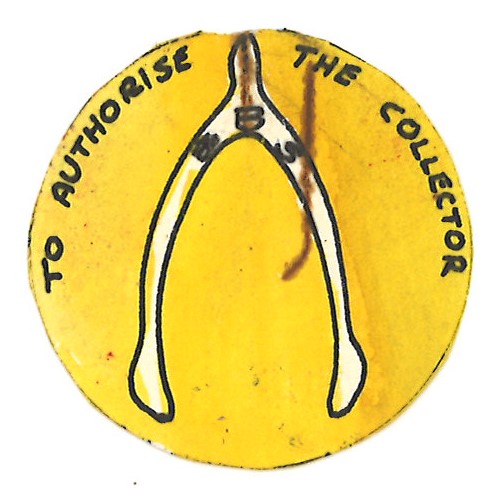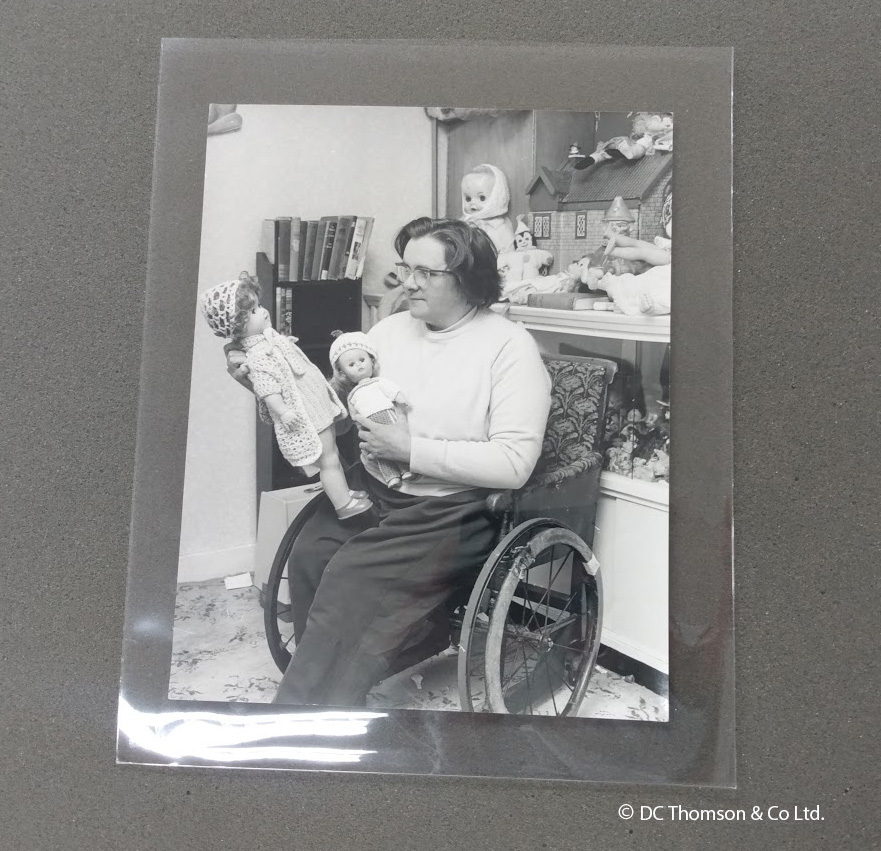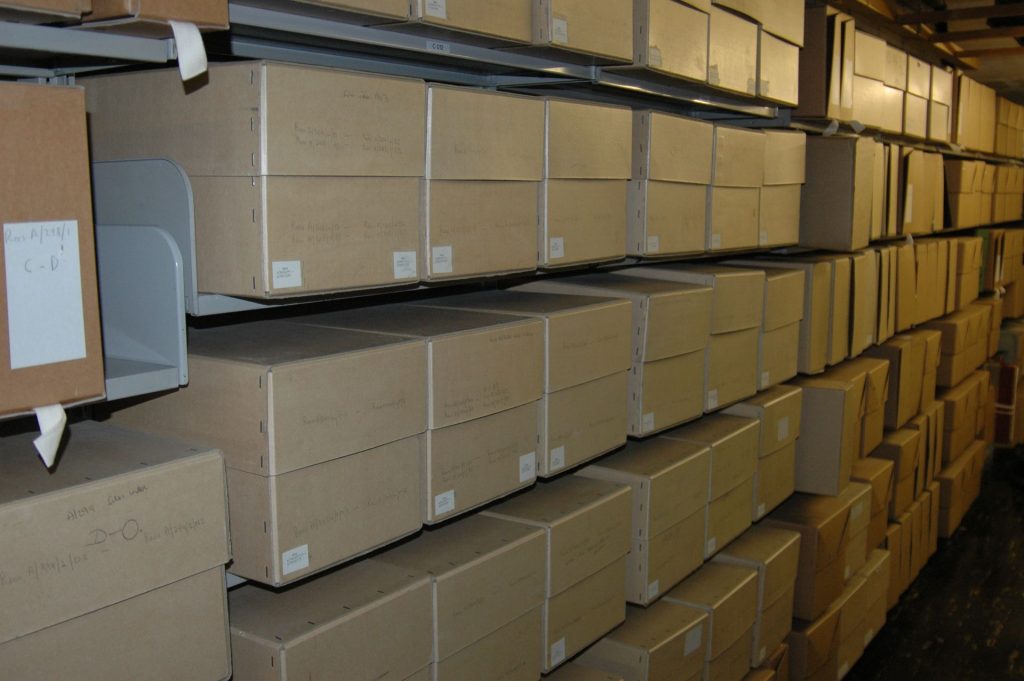Alasdair Bachell, Project Archivist, gives us an update on his work.
This month I wanted to give a brief update on the Brittle Bone Society archive project and give a little peek behind the curtain at what’s involved. The archive is comprised of over 60 boxes of material, the vast majority of which is paper records, which has now been listed and is now being arranged into an archive catalogue
What do I mean by “listed” though? Box listing is basically what it says on the tin and involves looking through each of the boxes that were deposited with us and noting their contents. This is simple in theory but as there is over 50 years’ worth of records in the collection, this step has taken a while! Records are also appraised for their long-term value – anything not kept will be offered back to the depositor or destroyed with their consent. The final list will then form the basis of the catalogue.
Rusty staples and paperclips are a common preservation concern for archivists as small amounts of moisture will cause the metal to rust which then stains the attached document. This paper token from 1972 demonstrates the damage that can be cause by rust. Incidentally, this may be the earliest depiction of the Society’s wishbone logo. We aren’t too sure what “To Authorise The Collector” means but it may indicate that the bearer was authorised to collect money for the society.

Staples will punch holes in documents and handling can expand these holes and cause further damage – especially when they have subsequently been bent out of shape or were not attached properly. It would take too long to remove every single staple, so I have removed any that posed an immediate threat to either the documents or my fingers.
It’s common practice to replace regular steel paperclips with brass ones, which are far more resistant to corrosion. Other metal fastenings are also removed when possible. Here’s all the metal I’ve removed from documents in the BBS collection so far with some of the brass paperclips for comparison.

Plastic wallets or sleeves are also quite common, and similarly pose preservation challenges. Many plastics give off trace amounts of chemicals which will discolour and damage paper records over time, including photographs. These are just the loose ones from the BBS collection – there are many more to remove and replace!

These are replaced with acid-free card folders or stored in stable plastic sleeves designed for archive use. This also provides them with additional protection from dust, scratches, and physical handling.

All the records in the BBS archive will be repackaged and placed in acid-free archive boxes which protects them from dust and light, both of which can damage documents over time. Once all the material has been re-housed the boxes will be placed in one of our archive storerooms, ready for retrieval.

The catalogue will be made available through our website , though not everything will be available to view immediately. To protect the privacy of individuals and to comply with data protection legislation, some documents that contain sensitive information linked to living individual might be closed. Records may still be viewable but under certain conditions which ensure their use is fair to the individuals referred to. This means that records may be closed or have limited access for a significant period of time but are still being preserved for future research.
While all the listing and paperclip removal has been happening, I have also been conducting oral history interviews with BBS members. This is an ongoing element of the archive project which will record the experiences of those with Osteogenesis Imperfecta and those working with the Society, preserving their voices for the future. You can listen to a clip from the interview with BBS trustee, Angie Stewart talking about establishing the Junior Brittle Bone Society:
I’m incredibly grateful to everyone who has generously given me their time to tell their stories. These recordings join our larger collection of oral history interviews, and you can find out more here .
Hopefully this has given you a taste of some of the work that archivists do behind the scenes. While not always glamorous, it’s important to make sure that these records survive as long as possible, and basic steps can go a long way to helping achieve this.